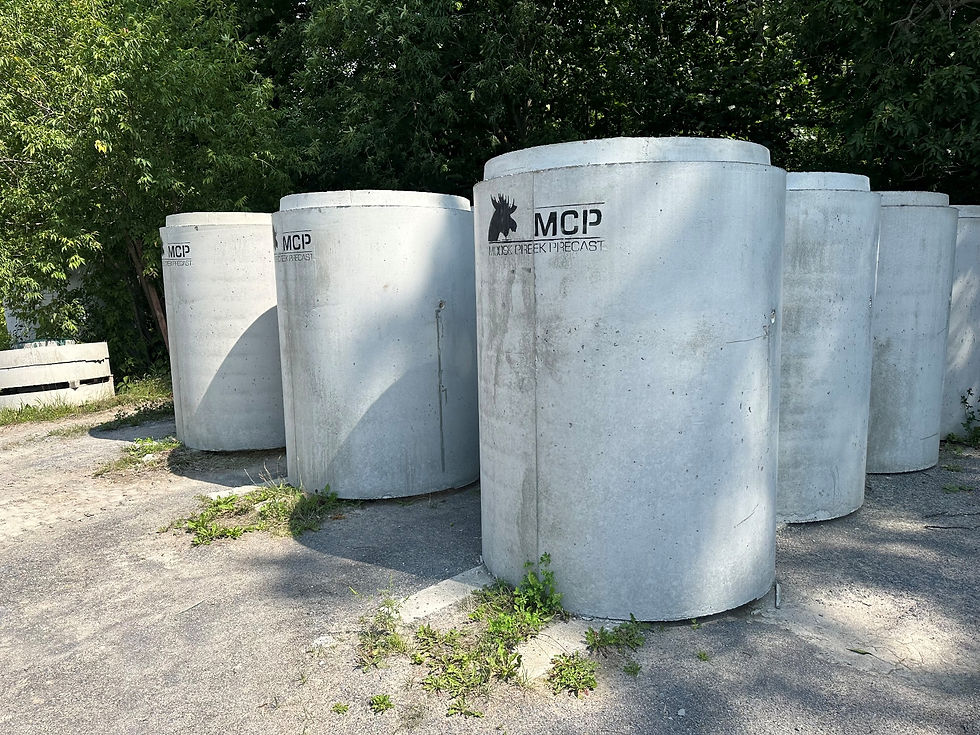Precast Concrete Waterproofing: Debunking Myths and Understanding the Facts
- Yellow Pages Admin

- Sep 25
- 2 min read
Precast concrete is widely used across Ottawa and Ontario for both structural and architectural applications. Yet several common myths persist regarding waterproofing. Some believe that all concrete is inherently porous and, therefore, unsuitable for watertight structures, while others assume that no additional waterproofing is necessary with precast products.
At Moose Creek Precast Inc., a trusted precast concrete company, we aim to provide accurate, clear information about how precast concrete waterproofing works. By understanding how high-quality precast concrete is produced and protected, industry professionals can specify and install products that deliver long-term performance.

Is Precast Concrete Waterproof?
Precast concrete contains a network of capillaries that can allow water migration. However, through controlled production methods, this permeability is significantly reduced.
Properly manufactured precast components have lower porosity due to careful mix design, low water-to-cement ratios, high-density concrete, and correct curing processes. When combined with modern waterproofing measures, precast concrete provides excellent moisture resistance, suitable for a wide range of building applications, including structures such as septic water tanks, where watertight performance is essential.
Debunking Common Myths about Precast Concrete Waterproofing
Some of the most common misconceptions are:
Myth 1: All Concrete Is Porous and Cannot Resist Water
While untreated concrete can absorb moisture, precast concrete made with controlled factory production can achieve very low permeability. These products are manufactured to meet or exceed CSA standards for density and durability.
Myth 2: Waterproofing Is Unnecessary for Precast Products
Even though well-made precast components resist water infiltration, additional waterproofing measures may be required as per jobsite specifications. Sealants, coatings, membranes, and in some cases, an advanced treatment system may be used to create a complete moisture barrier.
Myth 3: On-site Concrete Is the Same as Precast Concrete
Precast concrete is produced under strict quality control, with precision mix design and curing conditions not possible with many on-site pours. As a result, precast components generally exhibit higher density and lower permeability than site-cast equivalents.
How Moose Creek Precast Inc. Ensures Moisture-resistant Precast Concrete
As a precast company, we strive to manufacture precast concrete products that meet the rigorous demands of modern construction.
Our process includes:
Designing low-permeability concrete mixes with appropriate admixtures.
Implementing strict curing protocols to optimize density and strength.
Applying sealants or coatings where required to meet project specifications.
Conducting quality control inspections to ensure product integrity.
These practices enable us to produce durable, moisture-resistant components that perform reliably in challenging environments.
Quality and Moisture Protection in Precast Concrete
Waterproofing is an important consideration when specifying precast concrete, but common myths can lead to misunderstanding. In reality, properly manufactured precast concrete, combined with appropriate waterproofing techniques, provides excellent resistance to moisture and long-term durability.
At Moose Creek Precast Inc., our team endeavours to serve utility companies, engineers, commercial and residential contractors, municipalities, and property developers with high-quality precast concrete products throughout Ottawa and Ontario. We are committed to meeting CSA and Ontario Building Code standards and to supporting your project success with dependable materials and trusted advice. To speak with our team, please contact us.

Comments